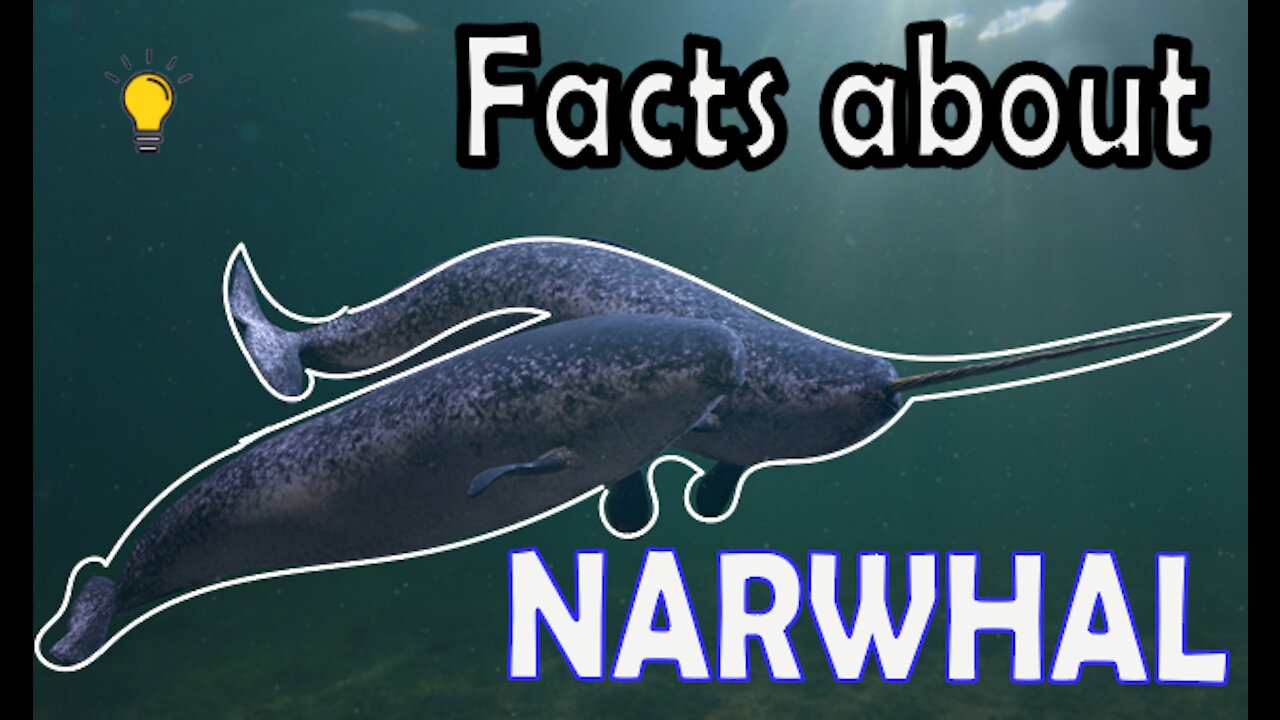Premium Only Content

WHAT! Narwhale can do this?
Licensor's Description:
The narwhal or narwhale (Monodon monoceros) is a medium-sized toothed whale that possesses a large "tusk" from a protruding canine tooth. It lives year-round in the Arctic waters around Greenland, Canada, and Russia. It is one of two living species of whale in the family Monodontidae, along with the beluga whale. The narwhal males are distinguished by a long, straight, helical tusk, which is an elongated upper left canine. The narwhal was one of many species described by Carl Linnaeus in his publication Systema Naturae in 1758.
Like the beluga, narwhals are medium-sized whales. For both sexes, excluding the male's tusk, the total body size can range from 3.95 to 5.5 m (13 to 18 ft); the males are slightly larger than the females. The average weight of an adult narwhal is 800 to 1,600 kg (1,760 to 3,530 lb). At around 11 to 13 years old, the males become sexually mature; females become sexually mature at about 5 to 8 years old. Narwhals do not have a dorsal fin, and their neck vertebrae are jointed like those of most other mammals, not fused as in dolphins and most whales.
Found primarily in Canadian Arctic and Greenlandic and Russian waters, the narwhal is a uniquely specialized Arctic predator. In winter, it feeds on benthic prey, mostly flatfish, under dense pack ice. During the summer, narwhals eat mostly Arctic cod and Greenland halibut, with other fish such as polar cod making up the remainder of their diet.[5] Each year, they migrate from bays into the ocean as summer comes. In the winter, the male narwhals occasionally dive up to 1,500 m (4,920 ft) in depth, with dives lasting up to 25 minutes. Narwhals, like most toothed whales, communicate with "clicks", "whistles", and "knocks".
-
 3:26
3:26
Only T Guitar
3 years agoWhat Faith Can Do - Kutless
62 -
 0:28
0:28
KMGH
3 years agoWhat you can do after vaccination
2684 -
 1:44
1:44
KMGH
3 years agoPreparing for wildfires: What you can do
261 -
 0:14
0:14
DobleV
3 years agoDog discovers what a vacuum cleaner can do
41 -
 1:05:19
1:05:19
Sarah Westall
13 hours agoDying to Be Thin: Ozempic & Obesity, Shedding Massive Weight Safely Using GLP-1 Receptors, Dr. Kazer
110K26 -
 54:38
54:38
LFA TV
1 day agoThe Resistance Is Gone | Trumpet Daily 12.26.24 7PM EST
75K12 -
 58:14
58:14
theDaily302
22 hours agoThe Daily 302- Tim Ballard
71K13 -
 13:22
13:22
Stephen Gardner
16 hours ago🔥You'll NEVER Believe what Trump wants NOW!!
119K346 -
 54:56
54:56
Digital Social Hour
1 day ago $12.53 earnedDOGE, Deep State, Drones & Charlie Kirk | Donald Trump Jr.
67.9K6 -
 DVR
DVR
The Trish Regan Show
17 hours agoTrump‘s FCC Targets Disney CEO Bob Iger Over ABC News Alleged Misconduct
71.6K43